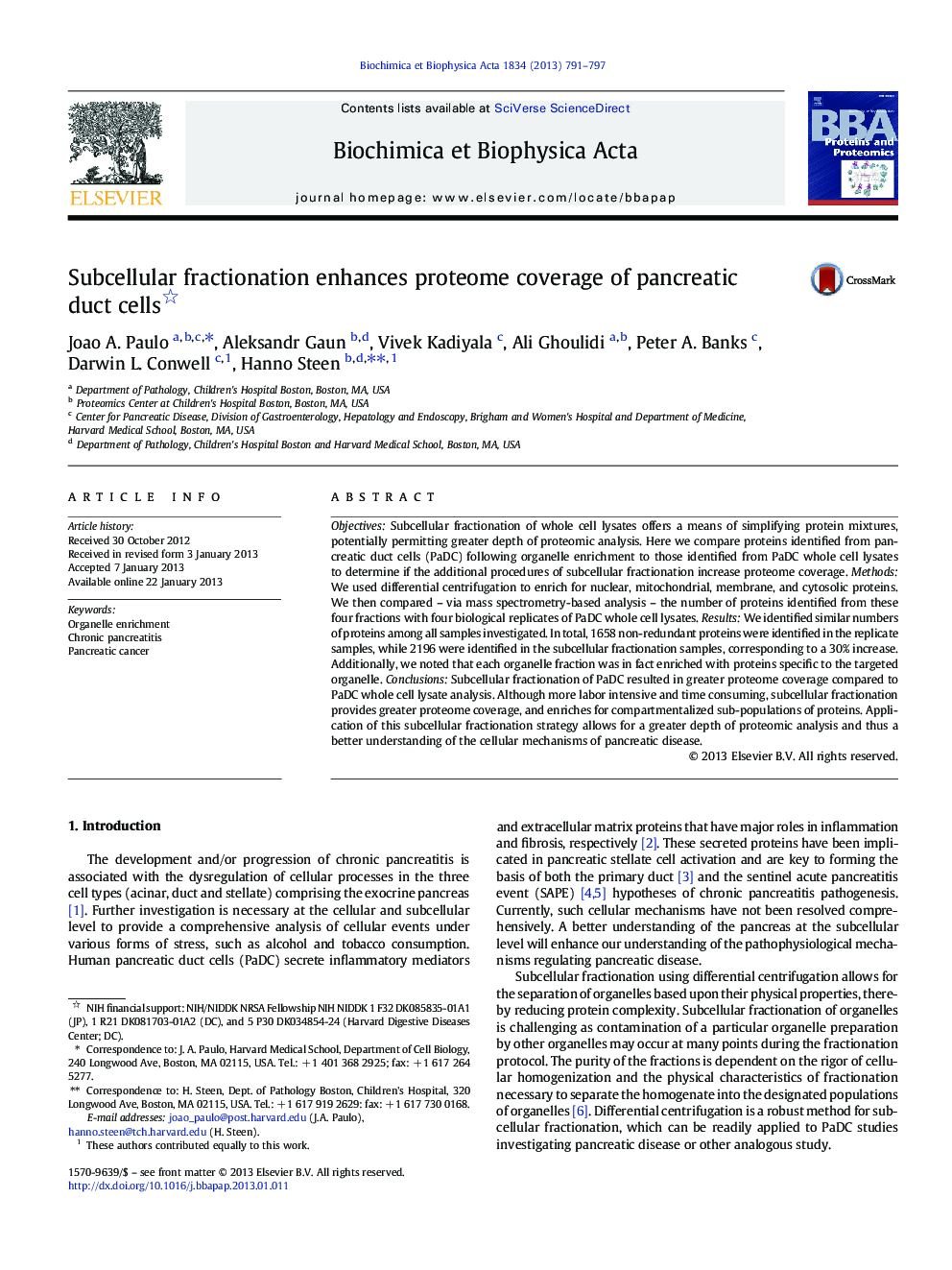| Article ID | Journal | Published Year | Pages | File Type |
|---|---|---|---|---|
| 1178298 | Biochimica et Biophysica Acta (BBA) - Proteins and Proteomics | 2013 | 7 Pages |
ObjectivesSubcellular fractionation of whole cell lysates offers a means of simplifying protein mixtures, potentially permitting greater depth of proteomic analysis. Here we compare proteins identified from pancreatic duct cells (PaDC) following organelle enrichment to those identified from PaDC whole cell lysates to determine if the additional procedures of subcellular fractionation increase proteome coverage.MethodsWe used differential centrifugation to enrich for nuclear, mitochondrial, membrane, and cytosolic proteins. We then compared – via mass spectrometry-based analysis – the number of proteins identified from these four fractions with four biological replicates of PaDC whole cell lysates.ResultsWe identified similar numbers of proteins among all samples investigated. In total, 1658 non-redundant proteins were identified in the replicate samples, while 2196 were identified in the subcellular fractionation samples, corresponding to a 30% increase. Additionally, we noted that each organelle fraction was in fact enriched with proteins specific to the targeted organelle.ConclusionsSubcellular fractionation of PaDC resulted in greater proteome coverage compared to PaDC whole cell lysate analysis. Although more labor intensive and time consuming, subcellular fractionation provides greater proteome coverage, and enriches for compartmentalized sub-populations of proteins. Application of this subcellular fractionation strategy allows for a greater depth of proteomic analysis and thus a better understanding of the cellular mechanisms of pancreatic disease.
► SDS-PAGE revealed distinct banding pattern for organelle-enriched fractions. ► Similar numbers of proteins were identified by each method. ► Greater overlap of proteins within replicates than within subcellular fractions. ► Gene ontology revealed expected enrichment of organelle-specific proteins.
